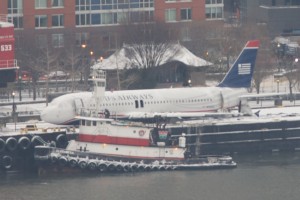
Losing Oxygen
Carbon monoxide is often called the “silent killer” as it is an odorless and colorless gas that is the product of fuel combustion. Approximately 430 people die each year from carbon monoxide poisoning, mostly as a result of carbon monoxide inhalation while sleeping. Low-level carbon monoxide exposure can result in symptoms, such as headaches and nausea. There are basic measures that you can take to protect against the risk of carbon monoxide exposure.
Reduce the risk that carbon monoxide gas levels will increase in closed areas. Certain appliances that produce carbon monoxide should only be used outside in well-ventilated areas, such as back-up generators and gas and charcoal grills for cooking. Fuel-burning appliances that are used inside the home and office, such as furnaces, cooking appliances and clothes washers and dryers, for example, must be properly maintained. Ensure that when carbon monoxide is produced, it does not accumulate in an enclosed or sealed area, raising the risk of poisoning. If you warm your car or use a remote starter, remove it from the garage before starting it. Verify that the exhaust pipe of a running vehicle is not blocked by snow or ice. During and after a snow storm, make sure that the vents for your furnace, stove, fireplace and dryer are clear of snow and ice accumulation.
Install carbon monoxide detectors and understand how to use them. Install carbon monoxide detectors outside each sleeping area and on every level of your home and office and in other locations as required by local codes. It is best to interconnect all of the alarms through the home or office, such that when one sounds the alert, they all do. Make sure to follow the manufacturer’s instructions for proper mounting of the detectors. The alerts issued by carbon monoxide and smoke detectors can be distinguished from one another – when the alarm sounds four times, that indicates carbon monoxide has been detected; three times means that smoke has been detected. A chirping noise may suggest that the battery power is low, so check it right away. If the chirping continues, call for help. Test your alarms monthly and replace the batteries when you change the clocks in the fall and spring seasons. Carbon monoxide detectors have a lifespan of about five to seven years, so be sure to replace them as needed.
Understand how to call for help should you suspect carbon monoxide exposure. As part of your business continuity planning, you should have on hand the non-emergency number of the fire department to call should the carbon monoxide detector sound an alert. If you hear the alert, evacuate the area by going to a fresh air location outside of the property. Be sure that everyone has safely exited the property. Once safely outside, call the fire department for help. Do not open the windows or switch off the appliances in the area as the fire department will need to examine them to determine the source of the carbon monoxide leak. And, in connection with your business resilience planning, share this information with your employees so they may ensure that their families and homes remain safe.




